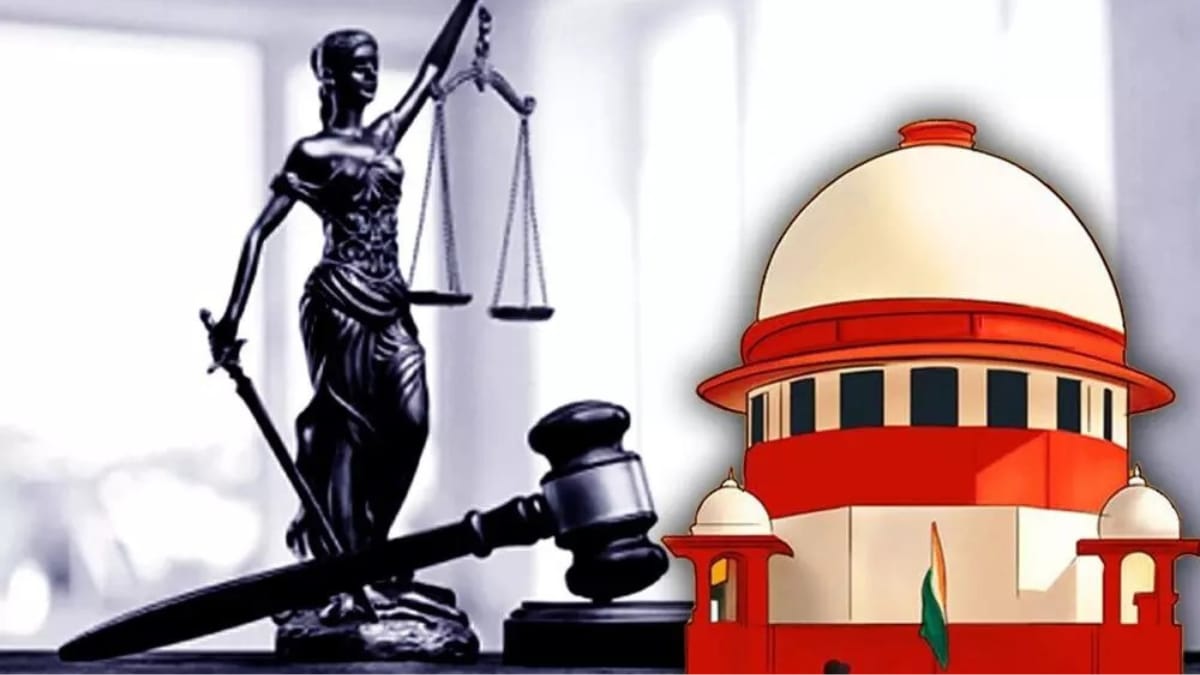The Supreme Court of India has raised its concerns over the delay in seeking justice by the citizens. A bench headed by Justice Aravind Kumar and S Ravindra Bhat who is retired now talked on this matter which came up while giving verdict to a 41 year old civil case regarding property dispute.
Not a Mirage but Reality:
Judiciary is an apex body that ensures that rule of law is established in the country and it is the strongest pillar which people look upon to. Keeping this point in mind, the bench raised this concern that delayed proceedings and justice is only making people lose faith in the judicial system. It stated that there is a need to bring changes and reforms in judiciary so that justice becomes “reality and not only mirage.”
Reasons behind the delay:
The bench concluded that there is a lot of procrastination and efficiency in the system that leads to delays in proceedings. The bench also mentioned about the ‘dilatory tactics’ [when a party intentionally violates the rules in order to delay proceedings] used by a party or another. There is unnecessary procrastination that leads to unachieved results and dissatisfied citizens.
Possible Reforms:
The top court has issued some directions to speed up the process of hearing and delivering justice which are mentioned in the following paragraph. The bench mainly focused on the district courts and Taluka level to bring change in their functioning and become more accountable because that’s where most of the general public reaches first for seeking justice.
These primary level courts must ensure proper execution of Order V Rule 2 of Code of Civil Procedure (CPC) that states that a concise statement and a copy of the complaint must be carried along whenever summoned by the court. They also need to check that Order VIII Rule 1 of CPC is followed, and a written statement must be presented by the defendant before the court in the prescribed time limit of 30 days.
Day-to-day basis Trial:
The top court also instructed the Districts and Talukas to ensure that only a specific number of cases must be dealt in a day to avoid overcrowding and unwanted adjournments. The day of the trial must be kept after consulting both the parties so that they can accordingly schedule their other commitments and be available on the decided date. There shall not be any changes or delay in proceeding after that and trials must be held on a day-to-day basis till the time it is possible.
Order IX, X and XVII to be followed:
Code of Civil Procedure lays down many rules and orders that need to be followed by the parties in the court. As per Order IX, X, and XVII, both parties must not skip the first hearing and the court shall examine both the parties. It also lays down the consequences in case any party is not present on the day of trial. The court shall adjourn the case or may dispose of it as directed in Order IX.
The top court has also suggested that refresher courses must be arranged by the Bar Councils periodically in virtual mode to keep the lawyers up to date.
Review Committee:
The lower courts are directed to present the statistics related to cases pending for more than 5 years now to their Principal judges every month. It is the duty of the Principal judge to collect all the data and then forward it to the High court’s review committee who shall look into the matter and possible reasons for the delay. This committee will constitute representatives of High Courts, made by the Chief Justice and it will have to meet once in 2 months to discuss and look up for the solutions.
So, these provisions are specifically made to speed up the pending cases of more than 5 years.
Data of Pending Cases:
There are around 1 crore pending civil cases in India according to a report released by National Judicial Data Grid. And out of these, 22% date back to 5 years ago which points out the inefficiency in the judicial system. According to Wikipedia, 85% cases, as on Dec 2022, are pending in district courts that revolve around 4 crore people. Not just that, the government itself is struggling with it, being the biggest litigant which has 50% pending cases.
The average time to get justice in India is around 30 months, nearly 6 times more than the European Judicial System. The longest time taken to resolve a case is 79 Years which is a shame for Indian Judiciary.
Lack of Judges:
The main reason that we can conclude behind the delays apart from ‘dilatory tactics’ can be lack of judges in India. According to 2021 data, there are 31% vacant seats in India. Somewhere around 2016, CJI gave an estimated number of judges required to solve all pending cases that was 70,000. The reality is that we have less than 20,000 judges which means reaching the target which will take another decade. The judge to citizen ratio in India is estimated to be around 21 judges per 10 lakh people which clearly explains the delay!
